Safari: 7 must-see attractions

Tanzania is one of the leading safari destinations in Africa. Travellers looking for the ultimate safari experience will love the national parks of Tanzania where an abundance of wildlife can be observed. From north to south, Tanzania has several national parks where you can experience unforgettable safari moments. Aboard 4x4 open vehicles, driven by guides, experts and wildlife enthusiasts, you will experience unique face-to-face encounters with the wildlife and breathtaking natural landscapes. Tanzania is also a favourite destination for hiking trails, including the famous Mount Kilimanjaro, known as the "Roof of Africa". Between safaris, trekking and hiking, and encounters with local ethnic groups, Tanzania also offers real moments of relaxation in the Zanzibar Archipelago, with white sandy beaches and beautiful coral reefs (great for diving) on the islands of Mafia, Chumbe and Pemba. For those wanting to discover the culture, Stone Town, on the main island, is a popular choice. Tanzania remains a high-end destination where the cost of travel is still high but where the real change of scenery and break from routine makes a visit worth every penny. Discover all the essentials for your trip to Tanzania.
Tourist attractions
The best safaris
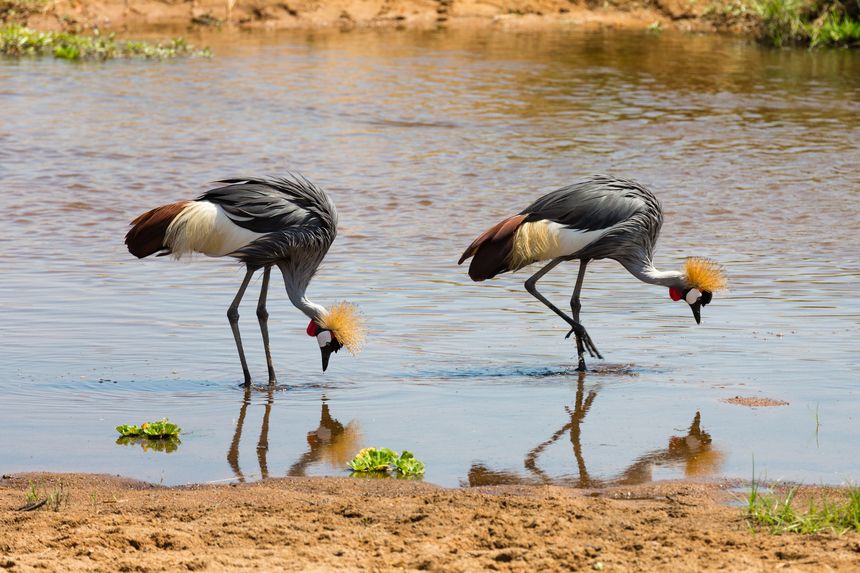
Ruaha National Park
Located in south-west Tanzania, this is the country’s second largest national park (after the Serengeti) with a total surface area of over 20,000 km² and at an altitude of around 1,000 metres. Here you will find a large concentration of lush flora and fauna in the middle of a savannah landscapes, dotted with baobab trees, palm trees and hillsides. This is an ideal spot to observe more than 550 species of birds. Here you can also see the greater kudu and the endangered wild dog.
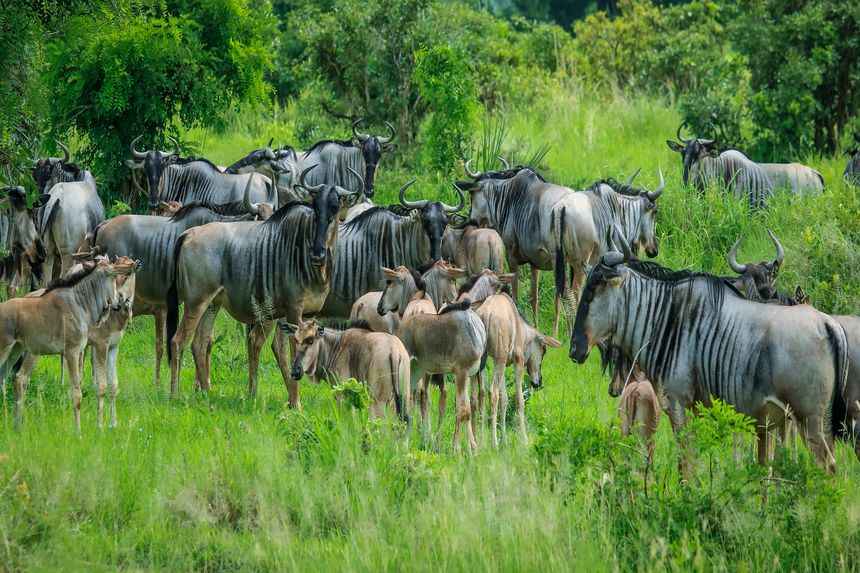
Mikumi National Park
Mikumi National Park, located northwest of the Selous Game Reserve, is easily accessible from Dar-es-Salaam, and is the perfect opportunity to get close to large mammals. The park is home to nearly 15,000 species across more than 3,000 km2 of wooded savannahs, plains and mountains. The Mikumi Park is connected to the Selous Game Reserve and the resident animals regularly use this "corridor", offering visitors great opportunities to explore the plains and observe the wildlife: wildebeest, zebra, buffalo, lion, antelope, giraffes and herds of elephants.
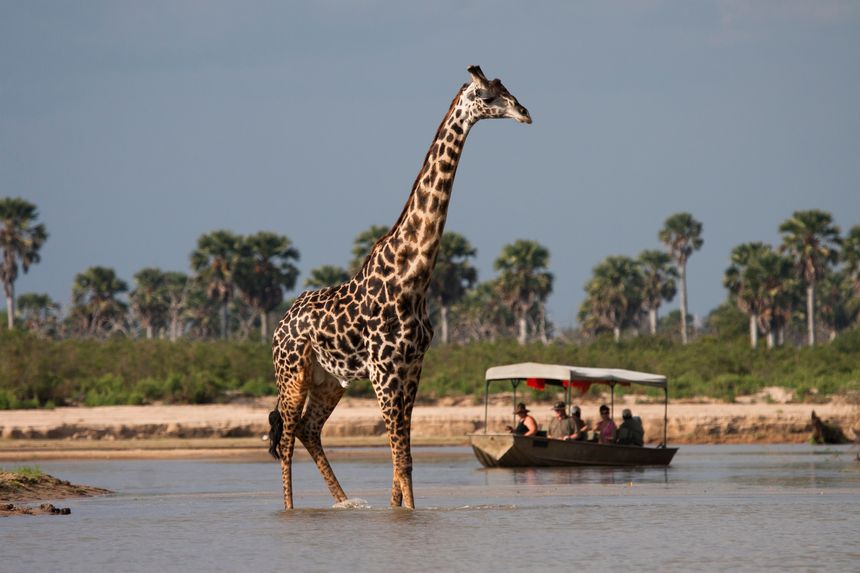
Selous Reserve
Welcome to southern Tanzania with the immense Selous Game Reserve, a UNESCO World Heritage Site located in the south-east of the country, offering 55,000 km2 of breathtaking landscapes and varying ecosystems. Off the beaten track, the Selous Game Reserve offers a variety of safari experiences by vehicle, boat and on foot. Here you can marvel at the variety of wildlife concentrated around the lakes and the Rufiji River.
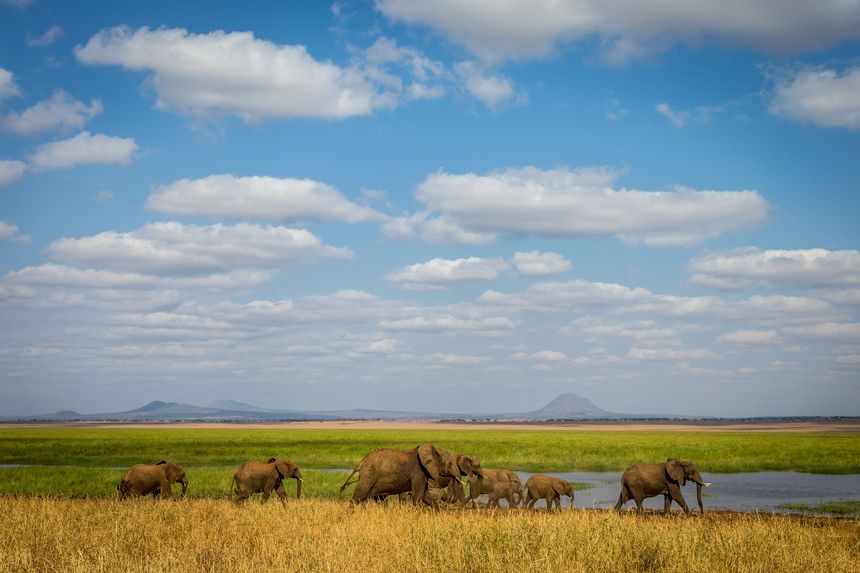
Tarangire National Park
A 1h30 drive east of Manyara Park is the Tarangire National Park, considered one of the most beautiful wildlife parks in the country.
Famous for the world's highest density of elephants (about 3,000), Tarangire Park also offers travellers great safari experiences, with opportunities to spot many large mammals, such as buffaloes, lions, elephants, black rhinos and leopards, amongst the wooded savannah dotted with acacias and baobab trees. During the December to May rainy season, many hippos can be seen moving from the grasslands to watering holes.
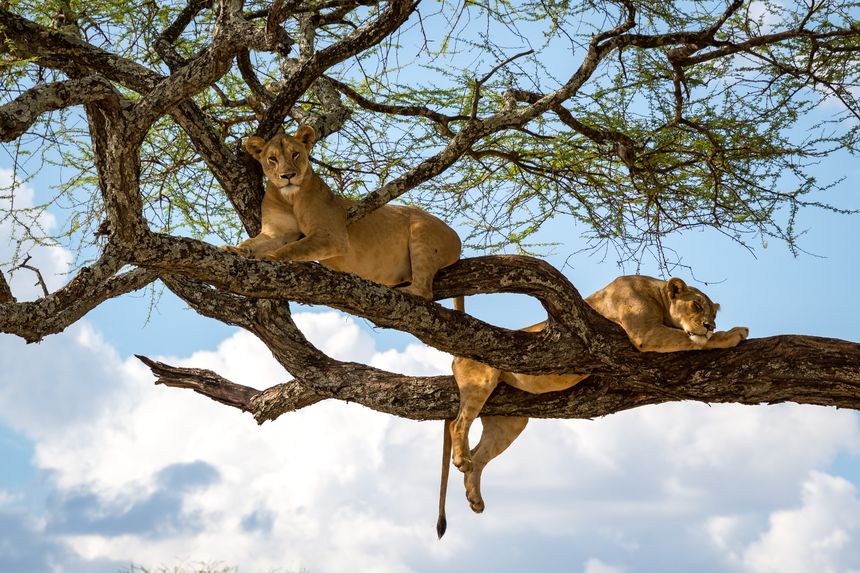
Manyara National Park
Also, in the north of the country and close to the Ngorongoro Crater and Tarangire National Park, is the Manyara Park, famous for its lions who bask in the trees and acacia branches and also for its high concentration of birds, including flamingos around Lake Manyara.
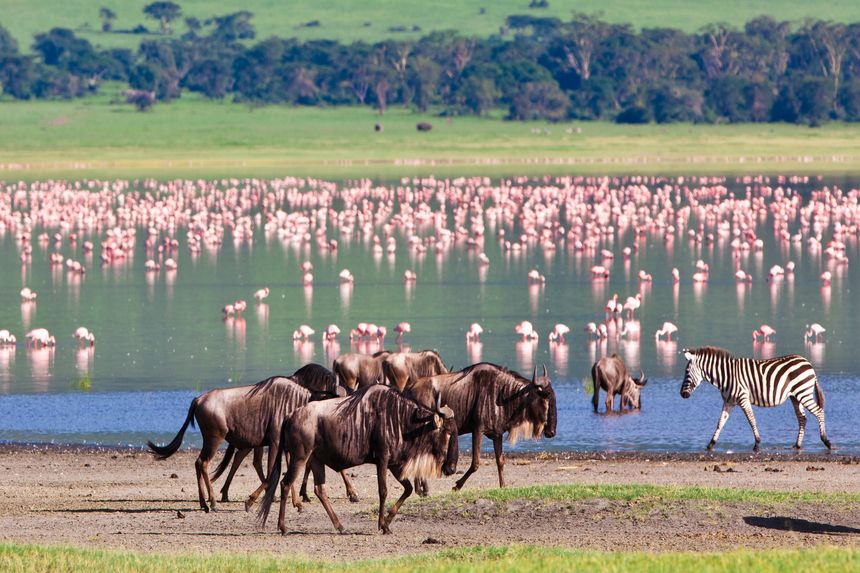
Ngorongoro Crater
Southeast of the Serengeti National Park, west of Lake Manyara, and listed as a UNESCO World Heritage Site, is one of Tanzania’s main tourist destinations: Ngorongoro Crater. The Ngorongoro crater, with a 20-kilometre diameter following the collapse of a volcanic cone, is a true natural wonder and home to 25,000 animals that can be easily spotted throughout the year. The crater is also home to the highest density of lions in Africa and offers outstanding safari moments, allowing you to get closer to wildlife at the heart of one of the world’s most beautiful natural sites.
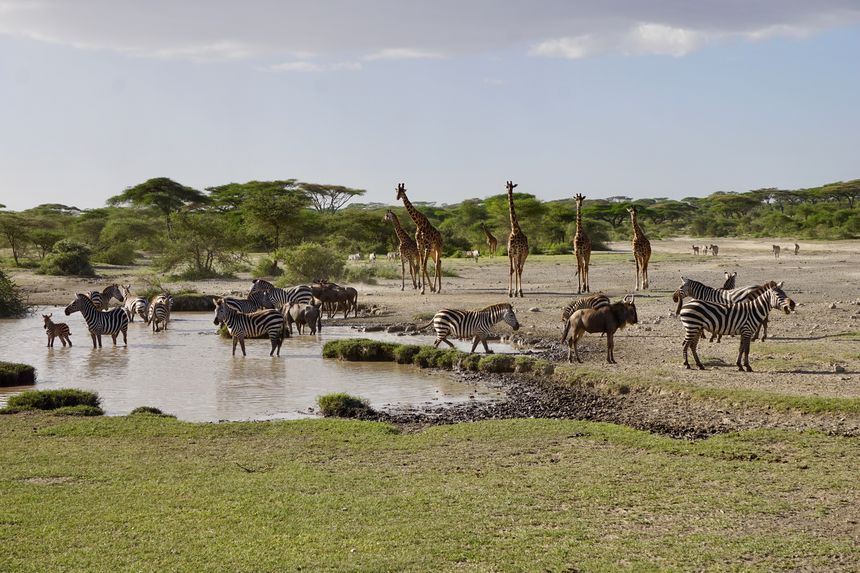
Serengeti National Park
In northern Tanzania, bordering Kenya's Masai-Mara Park, is the famous Serengeti National Park, one of the largest animal parks in the world. Nearly 15,000 square kilometres of savannah, home to the Big 5 and more than thirty species of large mammals and numerous birds. The Serengeti Great Migration is one of the most fascinating spectacles in Tanzania where, every year, several million herbivores, mainly wildebeest, antelope and zebra, cross the arid plains between Tanzania and Kenya in search of new pastures.

Travel writer and photographer
Marlène's review
Taking a safari in Tanzania remains a unique and memorable experience. Whether you visit the north or south of the country, Tanzania is the destination of choice if you want to experience safaris in a variety of environments, some of which are protected. The Ngorongoro crater offers, in my opinion, one of the most fascinating shows in Africa, due to the beauty of its location and its wildlife, while the Tarangire Park remains a big favourite for its green landscapes, baobabs and vivid natural light.
A safari in Tanzania also means travelling some long distances that can sometimes be tiring.
To get the best out of your safari, listen carefully to your guide and follow instructions, do not get out of your car, disturb the park wildlife as little as possible and opt for light and comfortable clothing. Woollen clothing is advisable for safaris at dawn and dusk.
You may also like
-
Flights to Tanzania
All you need to know before buying your plane ticket
-
Tourist maps
Region, attractions and distance map Tanzania!
-
Hotel or vacation rental?
Find your dream accommodation in Tanzania at the best price...
-
When to go?
Be sure to visit Tanzania at the best time of year!
and why not...
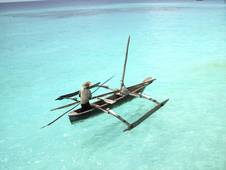 Zanzibar
Zanzibar




